Welcome to the Pilbara
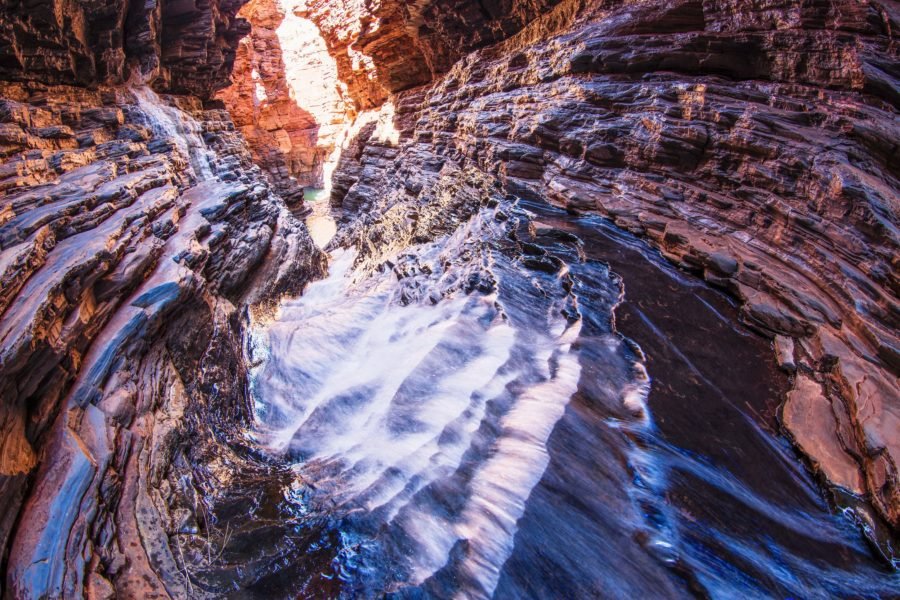
At first it’s hard to see the images Geoffrey Togo is pointing out in the landscape. Then you spot one, reset your line of focus and all at once they start popping out everywhere: emu toes and turtle eggs; kangaroo profiles; human stick figures adorned with headdresses. Suddenly you’re surrounded by depictions and stop dead in your tracks, worried about stepping on something important.
We’re standing in Deep Gorge on the southern end of the Burrup Peninsula, near the north-west Australian coastal town of Dampier, at the edge of a vast outdoor art gallery. Geoffrey is a Ngarluma Elder and senior cultural ranger with the Murujuga Aboriginal Corporation (MAC), and this is one of Australia’s most significant Indigenous sites – the planet’s oldest and largest concentration of petroglyphs. Known as Murujuga to local Indigenous language groups, the Burrup is covered by chips, chunks, boulders and slabs of intrusive igneous rocks. These crystallised from molten magma trapped deep in the continental crust 2.7 billion years ago.
Their surfaces have been weathered to dark reds and greys, but digging at them exposes lighter tones and they’ve been used as a medium for at least 1 million petroglyphs: a patiently etched body of work created by thousands of artisans across at least 30,000 years. But the site is more than a huge expression of creativity. Here, the Elders explain, are life’s rules and guidelines, as relevant to current generations of Pilbara language groups as they were to their ancestors. Because of its geology, the peninsula is a permanent historical record and enduring instruction manual on cultural practice.
Much of the peninsula and adjacent Dampier Archipelago, which is also rich with cultural sites, has been protected since 2007 on the National Heritage List. WA’s Aboriginal Heritage Act 1972 provides protection, and almost half the peninsula is gazetted within Murujuga National Park. The 4913ha site – WA’s 100th national park – protects an area of significant ancient and living cultural heritage, and is the state’s first park to be managed jointly: the traditional owners working with the WA Department of Parks and Wildlife.
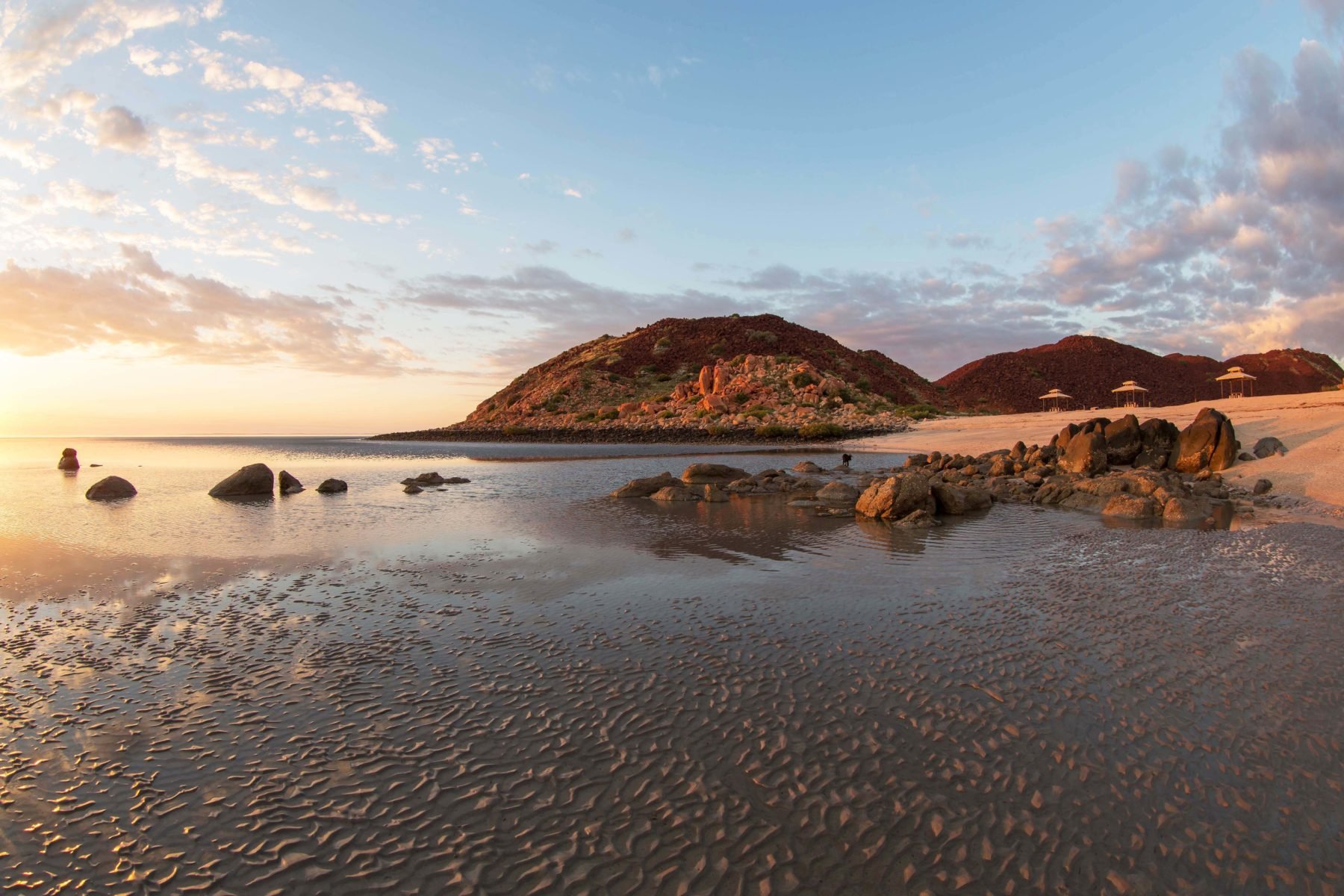
THERE’S NO avoiding the red dust of the Pilbara’s rusting rocks. It coats the landscape, infiltrates your clothes and hair and clads your skin, its metallic aroma rising with the morning’s heavy dew.
These rocks contain the huge iron-ore deposits that have underpinned the region’s economic development since the 1960s. Geologically, they’re known as ancient banded iron formations (BIFs) – layers rich with quartz and iron ore – that were deposited as silt, mud and clay up to 3.2 billion years ago around the edges and floor of primordial oceans. Their alternating stripes of red, separated by black, grey and sometimes even blue or green shales and cherts, adorn the Pilbara like massive geological artworks. And they form a row of iron-rich hills, the Hamersley Range, that runs for almost 500km.
The Pilbara’s BIFs lie over one of the oldest, most intact, sections of the Earth’s crust: the mostly granite and greenstone Pilbara Craton, which is thought to have formed 3.6 billion years ago – not long after the Earth’s formation.
More than 300km from the Burrup and two-thirds of the way towards the Pilbara’s eastern limits lies Karijini National Park, which, despite being one of Australia’s most remote parks, is among WA’s most visited.
The 6274sq.km park attracts more than 200,000 people every year. Many come from elsewhere in Australia and overseas, but the park is also used by an increasing number of locals including the fly-in fly-out workers of the region’s multibillion-dollar iron-ore mining industry. It’s a popular destination for workers on their days off.
Most are attracted by the spectacular water features in the park’s northern section: plunging gorges, cascading waterfalls, icy streams and rock pools. Beyond this, Karijini is a spectacular semi-arid landscape dominated by grey-green spinifex and the rich-red mounds of termites – the basis of most food chains out here.
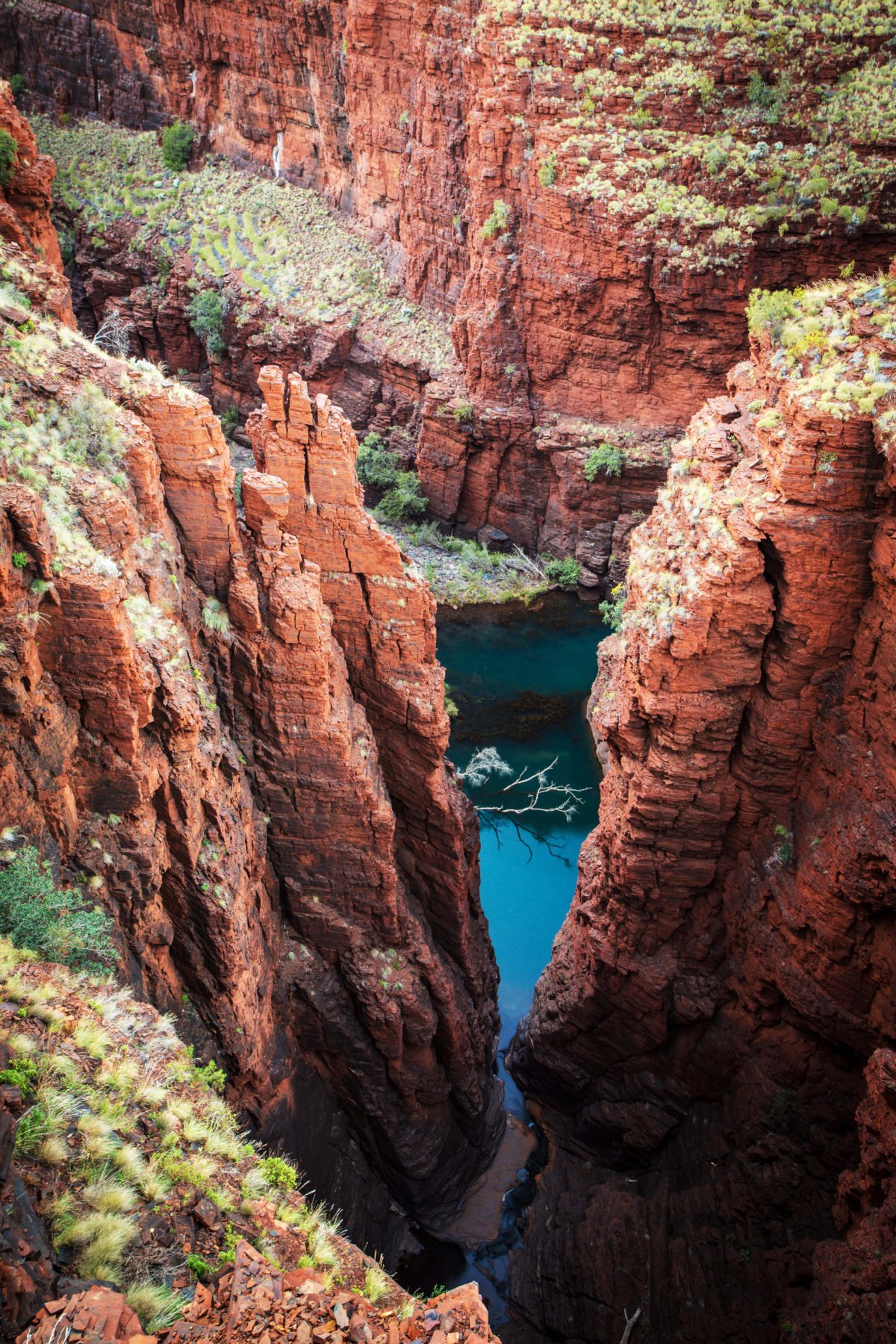
LIKE MURUJUGA, KARIJINI has deep cultural significance. Karijini means “hilly place” to the people of the area, explains Maitland Parker, an Elder with the local Banjima group, and refers not only to the national park but all the Hamersley Range.
Maitland was the park’s senior ranger for some 25 years but now works as a cultural awareness consultant for the big mining companies operating in the Pilbara. He has witnessed extraordinary change here during his lifetime: from the ration camps, reserves and settlements of the 1960s and ’70s into which different language groups were herded like cattle, to a Pilbara where profits are shared and culture is respected.
Cultural awareness was, says Maitland, initially forced on the mining industry but is now widely accepted as part of a change for the better, and respect for the region’s Indigenous heritage is growing.
“Aboriginal people say, ‘Look, that’s my Country, and in there I abide by my laws’,” Maitland explains.
Local Pilbarans – both blackfella and whitefella – agree, and will tell you, with a wink, to be careful about the red dust getting into your veins, which is, of course, physiologically impossible. But there should be a warning about it infiltrating your soul.
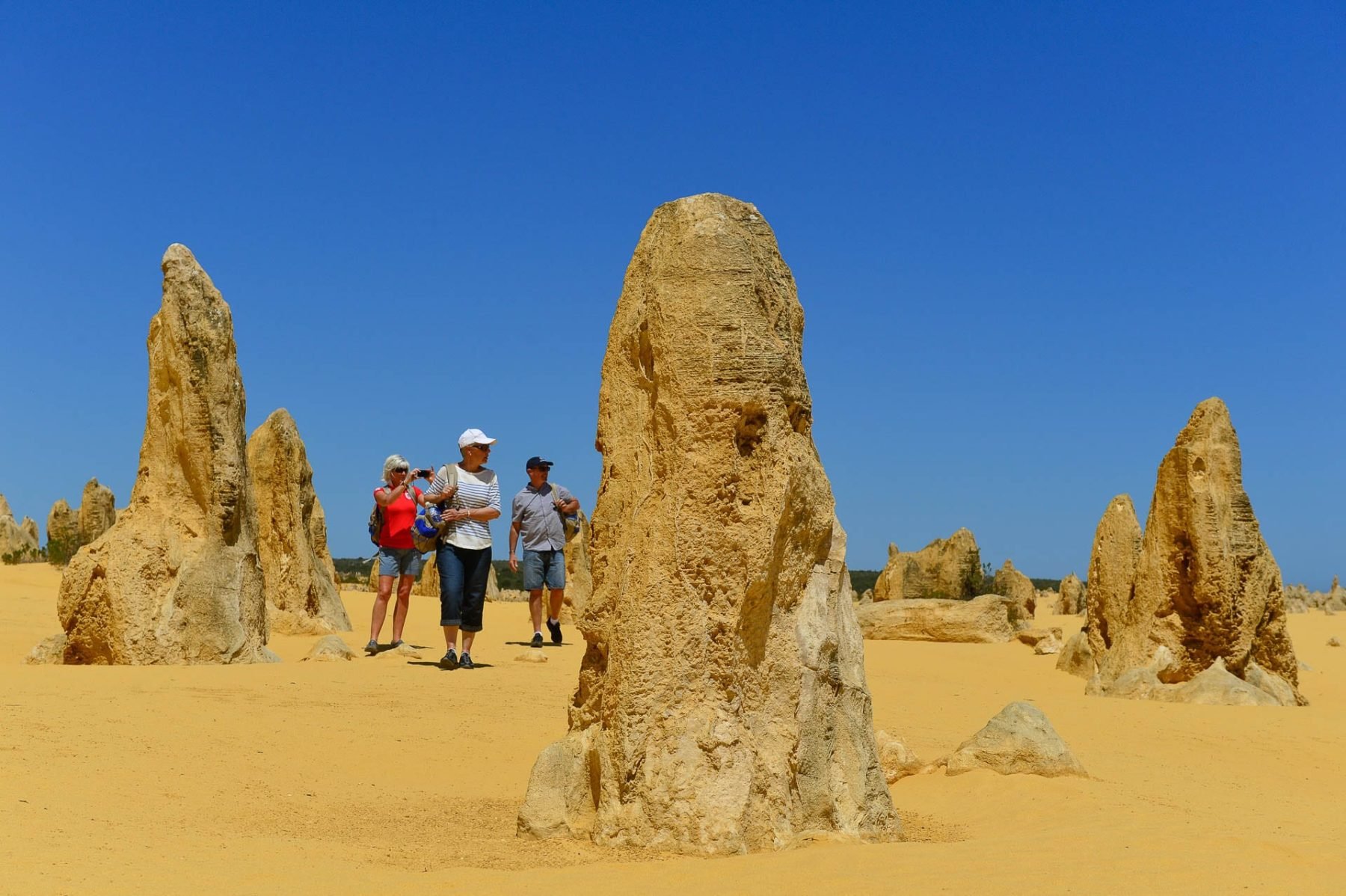
Discover the West Coast
Tour
Explore the Pilbara region on a small group tour. The 14-day Pilbara and West Coast Expedition from Broome to Perth takes in the heart of the Pilbara before heading south along the Coral Coast, stopping at gems such as Exmouth, Ningaloo Reef, Shark Bay, The Pinnacles (right) and more. Travel in a luxury all-terrain bus and stay in exceptional hotel, resort and lodge accommodation.
Visit Outback Spirit.
Eat
Tempt your tastebuds with fresh food aplenty during your exploration of
the Coral Coast. Visit Cervantes for western rock lobster, Dongara Port
Denison for rum tastings, Geraldton for great coffee and dining, Kalbarri for fresh seafood and a unique micro-brewery, Shark Bay for prawn and cockles, Carnarvon for tropical fruits, vegetables and seafood, and Exmouth for prawns, boutique breweries and great dining.
Visit Australia’s Coral Coast.
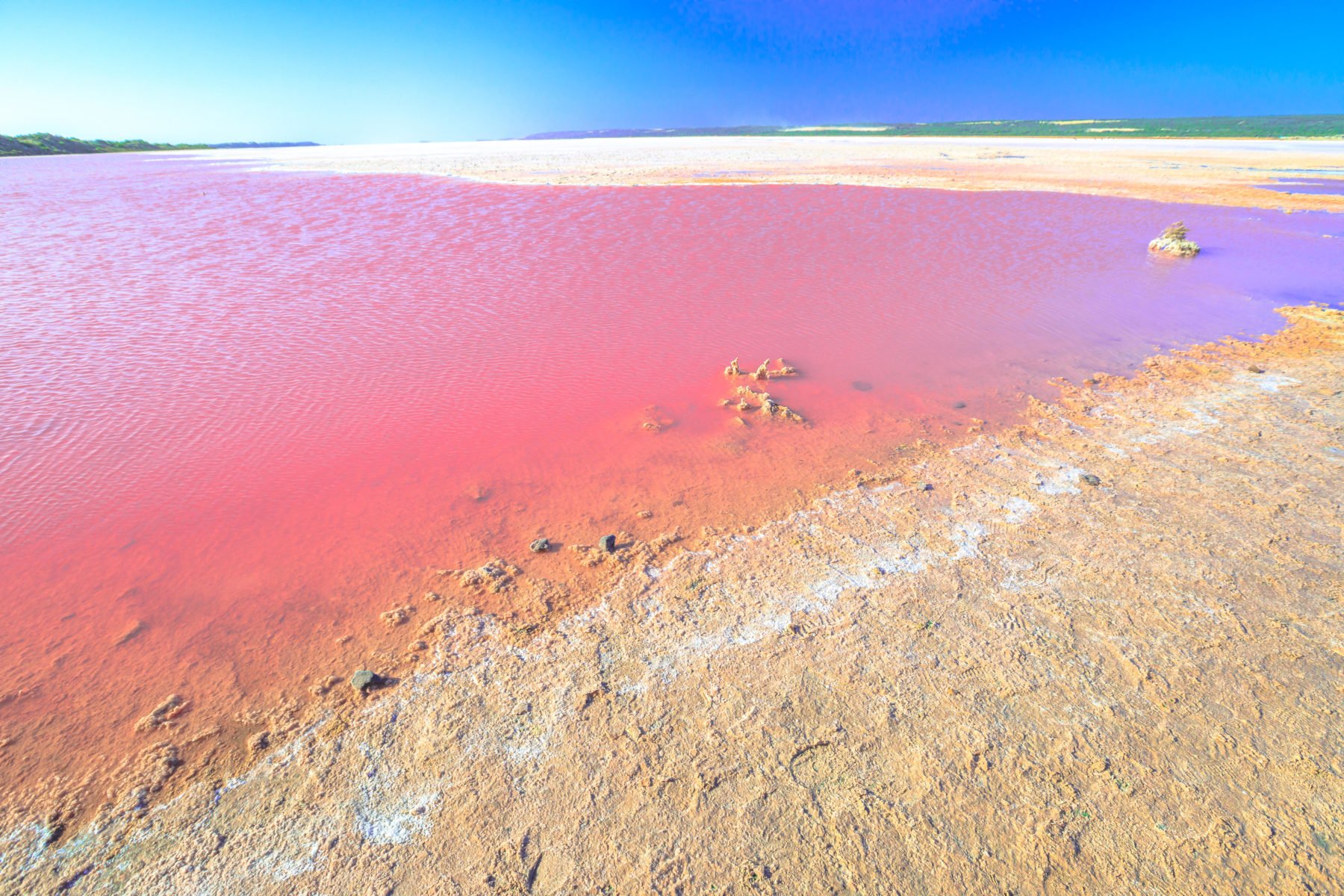
Visit
Drink in the bold pink hues of Hutt Lagoon (below) at Port Gregory, a scenic fishing village located between Geraldton and Kalbarri, six hours drive from Perth. The lake’s wild colours are created by the presence of carotenoid-producing algae, Dunaliella salina, which is a source of beta-
carotene and Vitamin A. The colour switches from red to bubblegum pink to lilac, depending on the time of day and the cloud cover.
Visit Australia’s Coral Coast.

